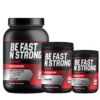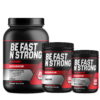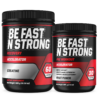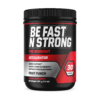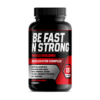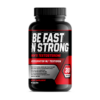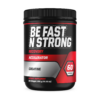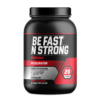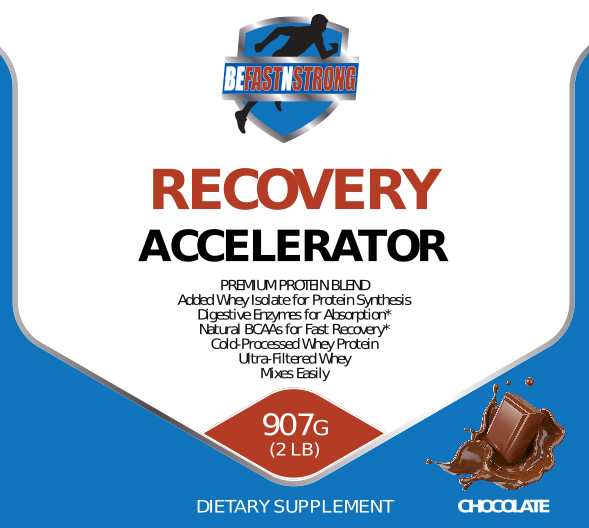How to Build Real Strength in 2024: Tips and Techniques
When it comes to getting stronger, many assume bigger muscles automatically mean greater strength. But anyone who’s seen a lean powerlifter lift staggering weights knows strength isn’t just about size—it’s about smart training, technique, and dedication. So, how can you focus on true strength-building this year?
Let’s explore some of the best methods, principles, and techniques to help you get stronger in 2024.
Key Principles of Strength Training
Understanding Strength vs. Size
Strength training isn’t the same as bodybuilding. While building muscle mass (hypertrophy) is a part of it, strength training focuses more on increasing power and endurance through functional movements and progressive challenges.
Proven Strategies to Boost Your Strength
1. Progressive Overload
The cornerstone of strength training, progressive overload, involves gradually increasing your workout’s intensity. This can be through:
• Adding weight to your lifts.
• Increasing reps or sets for a greater training volume.
• Challenging your muscles to work harder with every session.
Keep pushing your limits, and your body will adapt with stronger muscles.
2. Consistency is Key
Results come with time. Make strength training a regular part of your week, aiming to work each major muscle group at least once. For quicker gains, consider training larger muscle groups two to three times a week. Over time, these regular sessions compound into noticeable strength improvements.
3. Prioritize Recovery
Strength isn’t built in the gym—it’s built during rest. Research shows resting each muscle group 48 to 72 hours after a session allows for optimal recovery and growth. Embrace rest days and ensure quality sleep to maximize your training’s effectiveness.
Top Exercises for Strength
Strength training revolves around three main types of exercises: compound movements, isolation exercises, and bodyweight exercises. Each serves a unique purpose.
Compound Movements
These are multi-joint exercises like squats, bench presses, and deadlifts. Compound exercises engage several muscle groups simultaneously, creating efficient, total-body movements that are excellent for building strength.
Isolation Exercises
While compound exercises are great for overall strength, isolation exercises help you target and fully fatigue specific muscles. For example, bicep curls and tricep extensions can be useful for those looking to balance strength gains across different muscle groups.
Bodyweight Exercises
Using only your body weight, exercises like push-ups, pull-ups, and lunges are effective for building functional strength. For beginners, bodyweight exercises are great for building a base. As you progress, you can modify these exercises or add weights for an extra challenge.
Structuring Your Strength Training Program
Two popular programs stand out for building strength:
The ACSM Model
The American College of Sports Medicine suggests training two to three times per week, targeting all major muscle groups with compound and isolation exercises. A sample week might look like this:
• Monday: Upper body (bench press, overhead press, dips)
• Wednesday: Back and arms (pull-ups, barbell rows, curls)
• Friday: Lower body (squats, deadlifts, leg press)
5×5 Strength Training
The 5×5 protocol is a strength training staple. Each workout consists of five sets of five reps, emphasizing core movements like squats, bench presses, and power cleans. This structured approach is ideal for those aiming to lift heavier and consistently build strength.
Fueling Your Strength with Nutrition
Training hard requires proper nutrition. Here’s a quick rundown:
Protein Power
Proteins, particularly from sources like whey, provide essential amino acids for muscle repair and growth. Regular protein intake supports recovery, muscle growth, and, importantly, bone health, which is foundational for strength.
Balanced Carbs and Fats
Carbs are the primary fuel for muscles, helping you power through tough sessions. Fats, meanwhile, support hormone regulation, including muscle-building hormones. Together, they create a balanced diet that fuels both performance and recovery.
Supplements
A quality protein supplement can be a convenient way to meet protein needs. Creatine is also widely recognized for its ability to boost muscle growth and enhance strength training performance.
Common Pitfalls to Avoid
Avoid these common mistakes for safe and effective strength gains:
Overtraining
Pushing too hard without allowing adequate rest increases injury risk. Give each muscle group time to recover to maintain steady progress and avoid burnout.
Undertraining
Consistency is essential for steady strength gains. Skipping sessions or avoiding heavy lifts won’t allow for the level of progress many strength protocols recommend.
Selective Training
Don’t skip major muscle groups. A balanced routine that trains all major areas of the body avoids muscle imbalances and supports overall strength development.
FAQs on Getting Stronger
How Long Does It Take to Notice Strength Gains?
For beginners, visible results often start within a few weeks. For seasoned athletes, it may take longer to see substantial gains due to adaptation.
Is It Better to Lift Heavy or Do More Reps?
For strength, lifting heavier weights for fewer reps generally builds strength faster. For endurance, lighter weights with higher reps are effective.
Can I Get Stronger Without Weights?
Yes, bodyweight exercises are effective, particularly for beginners. Adding weights or modifying exercises can keep these workouts challenging as you progress.
Wrapping Up: There Are No Shortcuts
Building strength is a journey that requires dedication, a balanced approach, and consistency. Use these proven techniques, prioritize recovery, and fuel your body well, and you’ll be on the path to greater strength in 2024.
References
1. American College of Sports Medicine (ACSM)
• “ACSM’s Guidelines for Exercise Testing and Prescription” (10th Edition)
• Website: ACSM.org
2. National Strength and Conditioning Association (NSCA)
• “Essentials of Strength Training and Conditioning” (4th Edition) by G. Gregory Haff and N. Travis Triplett
• Website: NSCA.com
3. “Starting Strength: Basic Barbell Training” by Mark Rippetoe
• A practical guide on foundational lifts like squats and bench presses.
4. “Science and Practice of Strength Training” by Vladimir M. Zatsiorsky and William J. Kraemer
• Covers scientific principles for building strength.
5. National Institute on Aging (NIA)
• “Exercise and Physical Activity: Your Everyday Guide”
• Website: nia.nih.gov
6. Journal of Strength and Conditioning Research
• Peer-reviewed journal on strength and conditioning.
• Website: journals.lww.com
7. British Journal of Sports Medicine (BJSM)
• Research on strength training techniques and injury prevention.
• Website: bjsm.bmj.com
8. “Supertraining” by Mel Siff
• A classic in sports science on strength training.
9. International Sports Sciences Association (ISSA)
• Strength training articles and guidelines.
• Website: issaonline.com
10. Harvard Health
• Insights on strength training for various age groups.
• Website: health.harvard.edu
11. “Bigger Leaner Stronger” by Michael Matthews
• Techniques and programming for muscle and strength building.
This reference section provides further reading for those interested in diving deeper into the science and methods of strength training.


